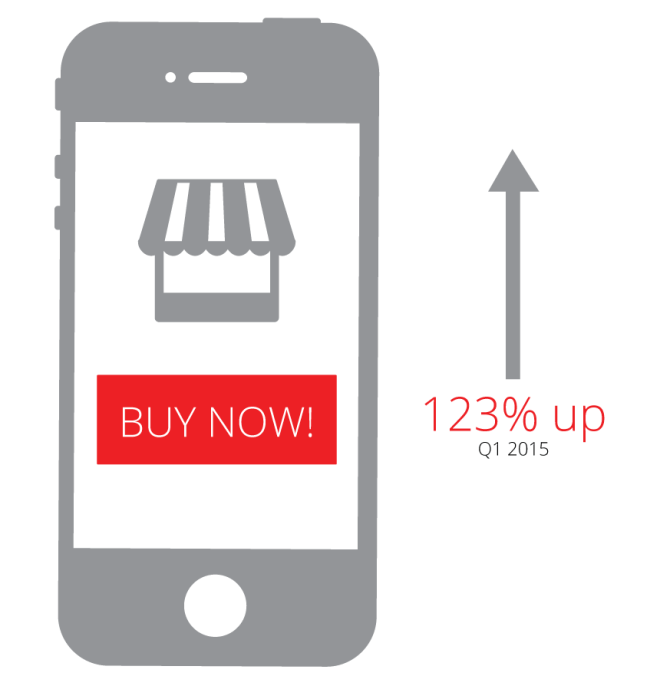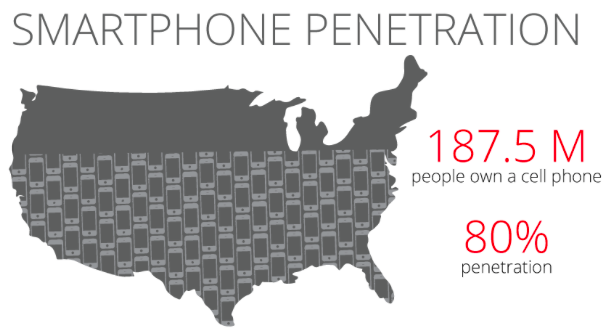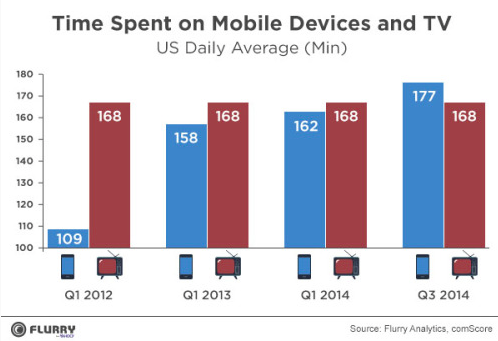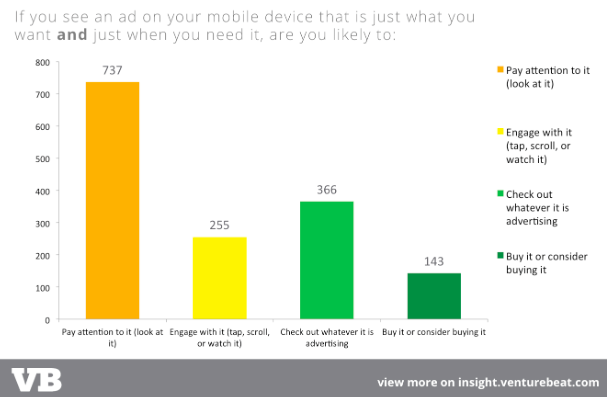Two quick facts about smartphone usage in the U.S. across all demographics:
1. Smartphones have an 80 percent penetration rate.
2. Smartphone owners spend 177 minutes per day on their phone (more time than they spend watching TV).
How to reach 80 percent
The way marketers reach 80 percent of people for 3 hours per day within the U.S. is by spending on paid mobile ads.
One could make an argument from the above two stats that a notable percentage of marketing spend should be in mobile, but there’s more to the story. Even with all of the technology platforms today, brands struggle to define why/how they invest in mobile or what to expect from ad spend.
For instance:
How should marketers think about mobile?
- Performance/ROI or branding?
What ad units deserve the most budget?
- Static display or video?
Where should mobile budgets be spent?
- In-app or out?
VentureBeat’s newly released 5-star mobile report written by industry veteran John Koetsier contains many of the answers to these questions, but there are a few highlights we wanted to publish here.
Focus on in-app
With an 80 percent penetration rate, smartphones are everywhere we look. While some recent reports of ad blocking have warned of a “catastrophic” impact on the mobile ad industry, others have presented a more balanced perspective. The reason advertisers should continue to be bullish here is because of how people spend their 177 minutes per day on smartphones. Koetsier’s report states that 80 to 90 percent of a user’s time is spent in-app, as opposed to mobile web browsing, and it’s hard to imagine Facebook or Pandora shutting down their mobile ad revenue channels.
Understand user mindset
Any marketer hearing tales of reaching 80 percent of people for 3 hours per day will be intrigued. But what’s critical to understand is the mindset of the user while on mobile. For those marketers looking to drive direct ROI or purchases, mobile may not be your answer. A recent blog post written by Crayon included data from Marketing Land showing that even though “mobile” accounts for 33 percent of ecommerce traffic, it only drives 10 percent of sales. VentureBeat’s own data also confirms this trend:
Now certainly, attribution models can show an overall lift based on mobile spend, but brands looking for easy ROI need to be cautious. What’s clear from Koetsier’s report is that brands can get a (precisely targeted) user’s attention on mobile, especially with video and captivating image-based ad units.
Creative failure
Even with the best targeting capabilities, mobile won’t work without investing in design resources. Brands have to invest in creative in order to be successful on mobile, and they most often fail (according to VB interviews and surveys) by lazily doing any of the following:
- Repurposing ads from desktop or offline
- Using static banner ads, which are usually ignored by users
- Not testing video
- Failing to include captivating imagery
- Rarely changing creative (or making unnoticeable changes to ads and re-testing)
Just scratching the mobile surface
- With an 80 percent penetration rate in the U.S., people spend 3 hours per day on their smartphone (more than TV).
- For brands without apps, mobile performance/ROI marketing doesn’t need to be a priority.
- To drive awareness, mobile is a valuable channel combining video and static ads.
To review all the data on mobile advertising, check out Koetsier’s full report containing in-depth analysis by industry, ad type, targeting, demographics, and everything else under the mobile sun.





